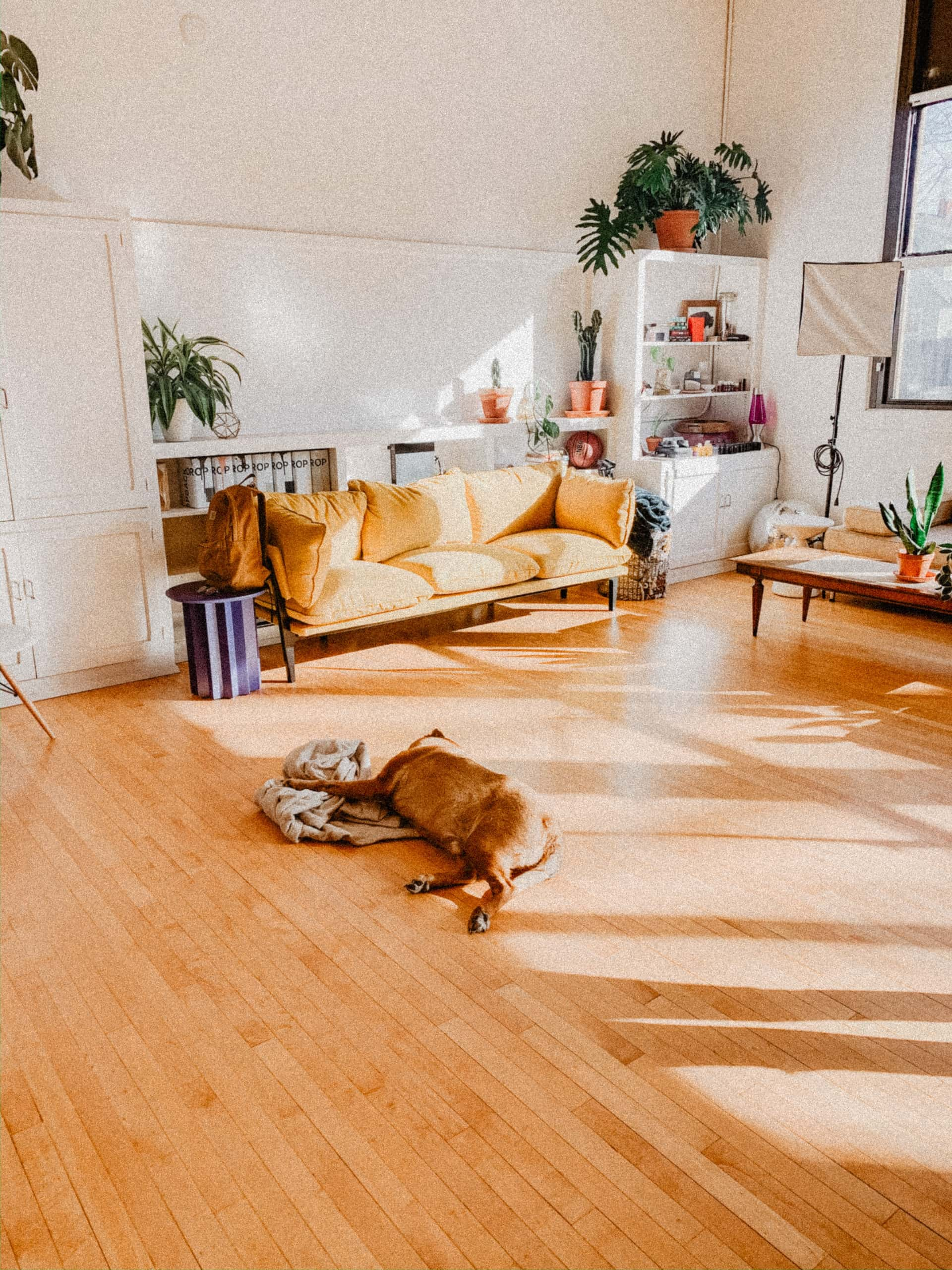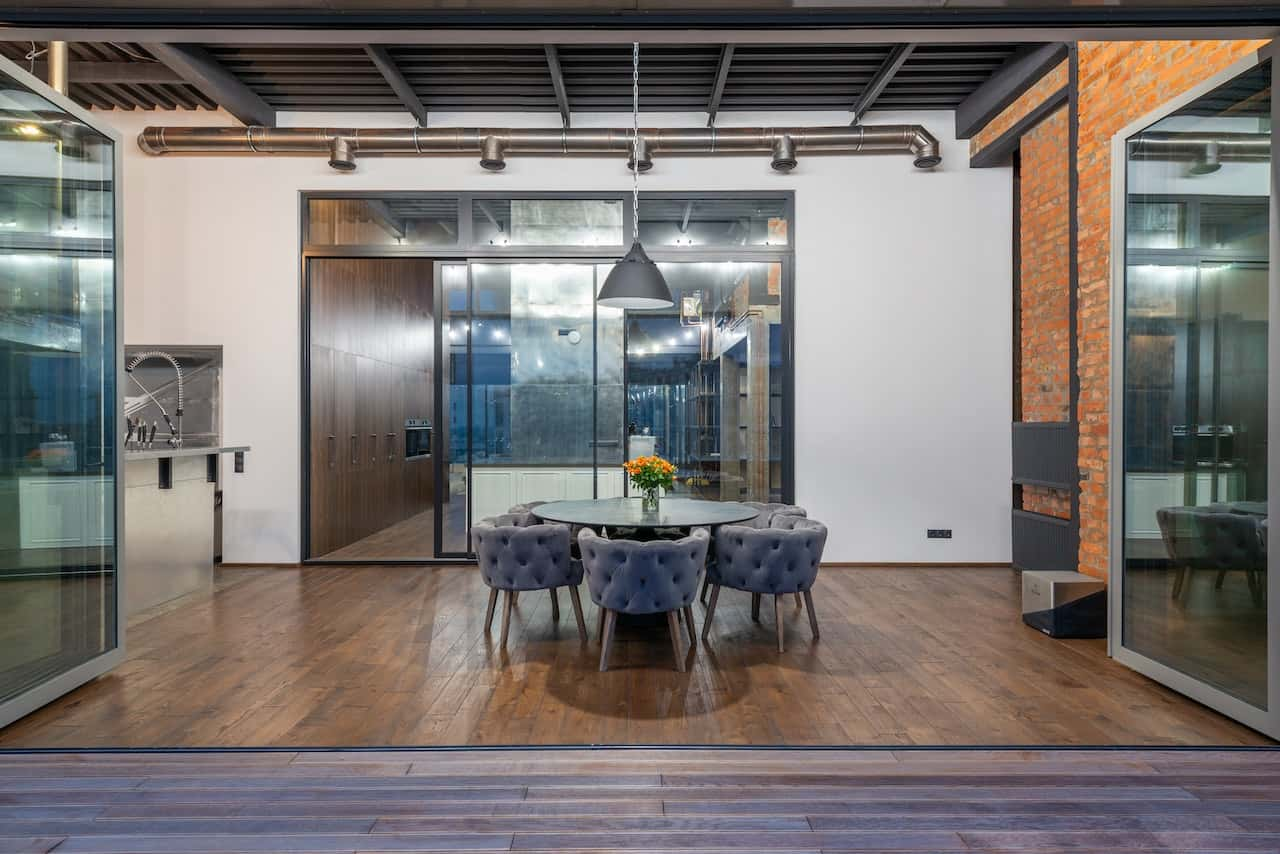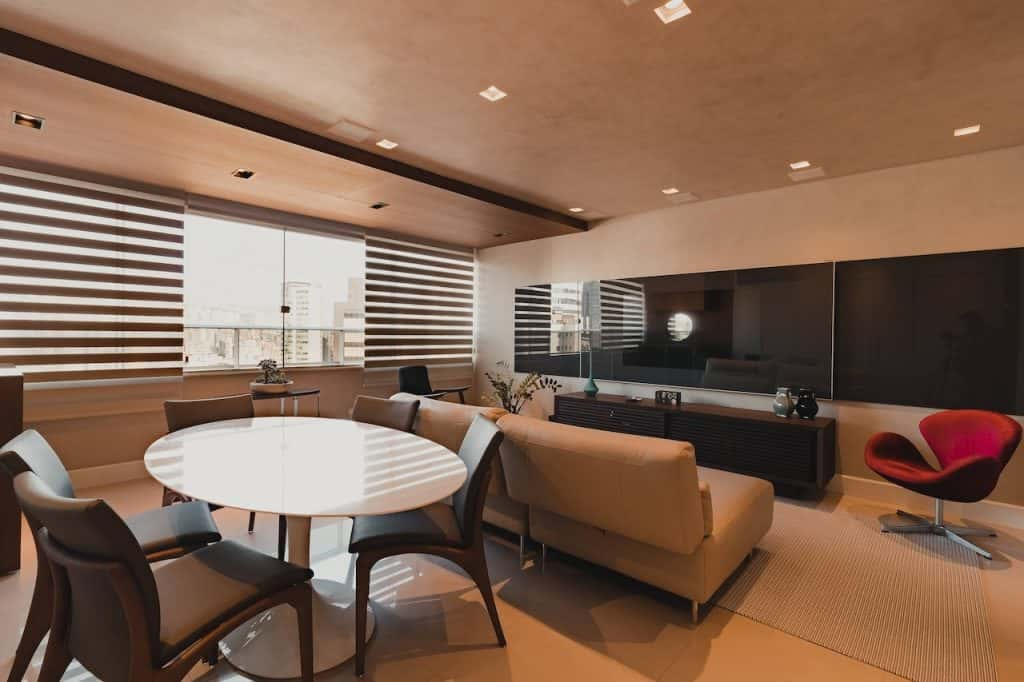Laminate floorings come in versatile and affordable choices providing homeowners with an attractive alternative to hardwood flooring. You have countless options in terms of material, texture, pattern, and installation types.
So how do you make a pick?

An easy approach is to break down laminates into different types and go from there. This guide will walk you through the various types of laminate sheets available in the market and their applications. So let’s get started!
Types of Laminate Flooring by Material
Ace The Imitation Game with Plastic Laminate
If you want to get the look of wood flooring without paying for the original wood, go for plastic laminate flooring. Plastic laminates are synthetic flooring products with prints on their veneer that imitate the appearance of natural materials like wood, stone, or ceramics.

They resemble the materials so much that one can hardly tell the difference by just looking. The hard top coat and plastic internal components make this laminate extremely durable.
For the Love of Natural
Engineered woods are for purists who are happy to pay extra for natural wood. These floorings are made of real wood glued together with acrylic lamination at the top.

Engineered woods are gorgeous and look even better with age. However, their cost can easily double plastic laminations. They are also less resistant to water, scratches, stains, or dents than plastic laminates. But you can rejuvenate them multiple times and make them last for generations.
Types of Laminate Floorings by Texture
The texture of your floor is a crucial consideration as it will help decide the look and feel of your room. Here are some popular texture types that you can incorporate into your living room interior design.
Pick Embossed Flooring for a Vintage Look
Embossed laminated floorings seek to emulate the aesthetic of natural woods. They come with pressed patterns that lend a wood grain texture to your flooring.

This laminate utilizes polymer as its primary ingredient to create natural-looking designs that are economical and eco-friendly. Pair it with wooden furniture to give your room a vintage retro vibe that reminds people of a ranch or a farmhouse.
Go Smooth and Sexy
Smooth floorings are the most common laminate flooring you regularly see in homes and offices. They are perfectly flat with no texture of grooves between planks to mimic the feel of polished woods, marble, or stones.

These types of laminate flooring are easy to clean and maintain – big reasons behind their popularity. However, they appear less realistic as compared to embossed floorings.
Stand-Out with Distressed Flooring
Distressed or hand-scrapped laminate is patterned to look antique. The lack of uniformity in texture and colour makes the model stand out from other laminations.

The versatile laminate goes well with traditional and modern setups and is compatible with almost all décor and colour combinations. It’s a safe, low-cost, and durable choice for sophisticated interiors.
Types of Laminate Flooring by Finish

Laminate floorings have made a significant leap in aesthetic trends in recent years. There are several laminate finish types you can choose from.
Simple and Sober Matte Finish for Office

Matte laminate finish types are non-shiny and lusterless, thus creating a matt effect on the surface. A major upside of this finish is its ability to hide marks and scratches under its muted appearance. Corporate offices mostly sport them for their subtle yet stylish look.
High Gloss Finish for a Luxurious Kitchen

Glossy laminate finish types offer a shiny and elegant look to your interiors. You can see this finish in clubs or the event industry. They are easy to clean and maintain, making them one of the best types of laminates for the kitchen.
Satin Finish for Modern Homes

Satin finishes are the most commonly used laminate finish types for hardwood flooring. It strikes a balance between glossy and matte finishes so you can reap the benefits of both finishes.
Natural Wood Finish for Classic Interiors

These laminate finish types use very little polishing or smoothening to mimic natural wood coming straight out of lumber.
Oiled Wood Finish For Warm and Cosy Interiors

These laminate finish types are meant to look like natural hardwood treated with natural oils. The flattering finish adds warmth and cosiness to your interiors.
Jazz Up with Oxide Surface Finish

The oxide surface finish offers a hint of metallic characteristics with a small dose of shine. They are suitable for modern, chic interiors.
Slate/ Stone Finish For Elegant Interiors

They replicate the look of stone floorings. They are mainly used in kitchen countertops, walls, and balcony areas.
Laminate Flooring by Edge Types

Laminate edge types refer to how the planks are cut and look together. Here are some of the options available for laminate edges:
Square Edge
Square edges are cut to perfect 90-degree angles. They allow for a smooth and seamless transition from one plank to another.
Micro Bevel
Micro bevels are edge types with a fine bevel or rounded corner cut to 45 degrees down the sides of the long floorboards. They are also known as eased, kissed, or micro-v bevels because the meeting of two slopes creates a V-shape.
Deep Bevel
The V-shape is much more pronounced in the deep bevel. The individual flooring panels are delineated, giving room for a more authentic appearance of solid wood planks.
Rolled Bevel
In rolled-over bevel edges, the design and colour of the bevel continue beyond the border. This edge design results in a soft slope giving a realistic plank look.
Painted Bevels
In painted bevels, the edges are painted to make the groove more pronounced. Such detailing highlight each board and bring more dimension and interest to your floor.
Types of Laminate Flooring by Installation Type

Once you decide on the material, texture, edge type, and finish, now is the time to explore the easiest and most convenient way to install them. Here are a few types of laminate sheets you can go for.
Glueless Click Flooring
The ease of installation makes glueless click one of the most popular types of laminate flooring, regardless of the home type. These types of laminate require no adhesive, making it mess-free. Most glueless click lamination uses a double-lock system to lock it into its place, so you won’t have to worry about it coming off. It’s simple and convenient for people with no prior flooring experience.
Glued Flooring
This is an old-school way of installing laminations. A benefit that glued laminations have over glue-less ones is higher durability. There’s a slim chance of the product displacing if you attach it to the floor properly.
Pre-Glued Flooring
Pre-glued laminations come with adhesive connected, so you won’t have to waste time glueing. They mostly come in the peel-and-stick form that you can connect to the floor instantaneously. These types of laminate flooring are popular for their papery and lithe texture and strong imitation of materials ranging from wood to ceramics.
How to Choose the Right Laminate Flooring?

With the different types of laminate sheets available, here are the key factors you should consider before making a choice.
Keep Your Lifestyle in Mind
Do you have a lot of activity in your home? For example, are there kids, pets, and lots of visitors? If so, you need to be careful with the selection of lamination.
A low gloss and varied or distressed textured flooring will look much cleaner in busy households. Look for types that need low- maintenance and are extra durable.
Also, check the abrasion rating on the laminates to measure their resistance to abrasion, impacts, and stains. Go for high ratings in the high-activity area. But if you live a quiet life, you can choose any texture that appeals to you, even if it has lower abrasion ratings.
Reselling the Property? Ramp Up Its Value
The quality of the laminate impacts your home’s value. So if you’re planning to resell your home, go for high-quality and durable laminates. Engineered wood flooring can upgrade your resale value better than plastic laminates.
DIY or Professional Installation?
Laminates are one of the easiest floorings to install. You can do it yourself with the help of just a few materials. The availability of glueless and pre-glued planks has made the job even easier. However, if you’re inexperienced with DIYs or have a more complex design in your mind, it may be better to rely on professionals for a perfect job.
Be Mindful of Your Budget
Of course, price is an essential consideration for any interior décor idea. Laminates are affordable options to enhance your interiors without burning a hole in your pocket. However, if your budget allows, you can use other flooring materials, such as hardwood or engineered wood.
Wrapping Up

Now that you’re familiar with the different types of laminate flooring, all that’s left is picking impressive flooring for your abode. It’s a great alternative to expensive natural materials. For more interior décor ideas and tips, check out HomeLane- your one-stop shop for end-to-end home interiors.
FAQs
1. What type of laminate flooring should I use?
The choice of laminate flooring depends on individual taste and preference. You can choose from the different types of laminate flooring based on material, texture, finish, lifestyle needs, and your home’s overall interior.
Water-resistant lamination flooring works best in the kitchen, bathroom, and basements. For living and bedroom, you can go for high-end laminates with cushioned underfoot that are easier on the feet, as far as your budget can allow.
Do not forget to check the abrasion rating on the laminate flooring products to determine their durability and resistance.
2. How do I know what laminate flooring to use?
You must consider several factors before choosing the best laminate flooring option that matches your need. They include aesthetic appeal, lifestyle, durability, installation type, and budget.
As regards aesthetics, you have several options for material, colour, texture, and finish that you can choose from. First, however, you must ensure that your chosen product resonates with your lifestyle.
For instance, if you have a busy household, you better go for resistant, durable, and low-maintenance options. Remember that smooth surfaces look dirty sooner than textured surfaces. Likewise, only choose a glossy finish if you can well-maintain them.
Finally, you must decide where to self-install the flooring or hire a professional. Lastly, ensure you do not go overboard with your budget when choosing the different types of laminate flooring.
3. What is the most durable type of laminate flooring?
The abrasion (AC rating) on the laminate floor products will guide you to the most durable laminate floorings. It will help you identify what level of wear and tear the floorings can endure. The ratings are broken down into five levels, from AC1 to AC5. A higher rating signifies higher durability.
AC 1: Designed for light traffic areas such as bedroom, closet, dining room, and storage room
AC 2: Designed for moderate traffic areas such as the living room and dining room
AC 3: Designed for high-traffic residential use such as corridors, children’s rooms, stairs, living rooms, etc.
AC 4: Designed for general commercial spaces such as small offices, cafes, boutiques, general stores, etc
AC 5: Designed for heavy traffic commercial spaces such as large corporates, malls, restaurants, departmental stores, etc
4. What is a good thickness for laminate flooring?
The most common thickness range for laminate floorings is 6mm to 12mm. When deciding on the thickness of your plank, consider the subfloor they will be laying on. A thinner plank (6 to 8 mm) will work well for stable subfloors.
On the other hand, uneven floors call for thicker and more durable types of laminate sheets that can pan minor variations, probably in the range of 10 to 12mm.
5. Is thicker or thinner laminate better?
Generally, thicker laminates have several advantages over thinner laminates. They can better withstand high foot traffic and are usually more durable. They also resemble other natural flooring materials like wood more closely. Further, they are easy to install, and you may be able to do it yourself.
However, the cost of thicker laminates is slightly on the higher side. But considering all the benefits, it may be worth the price.




